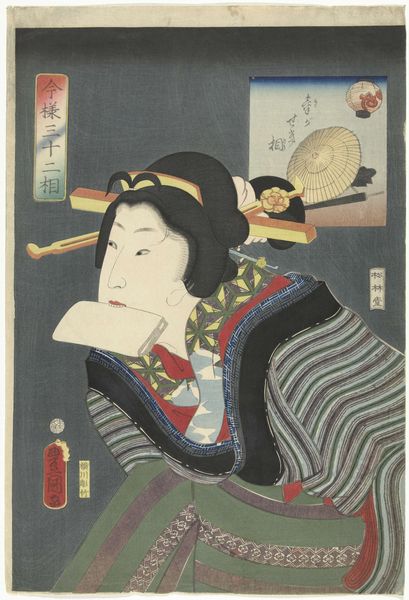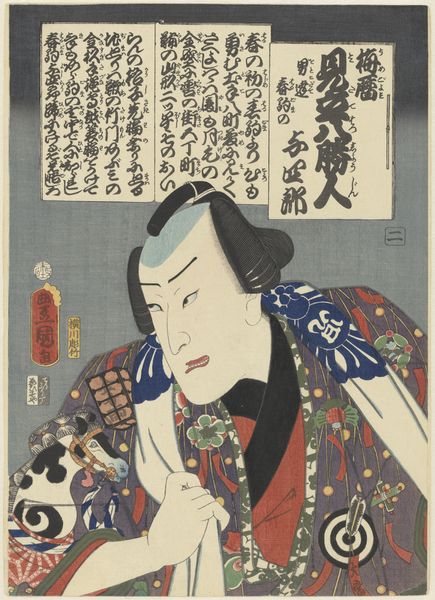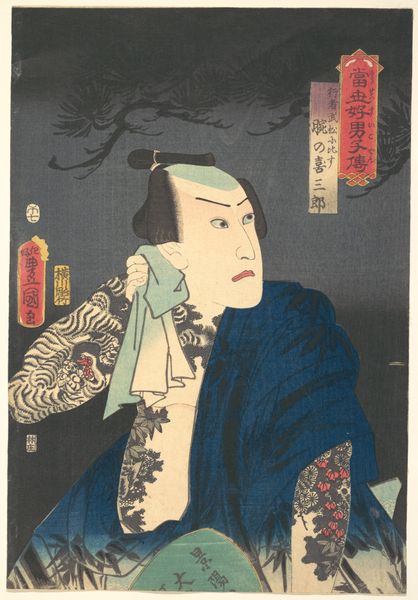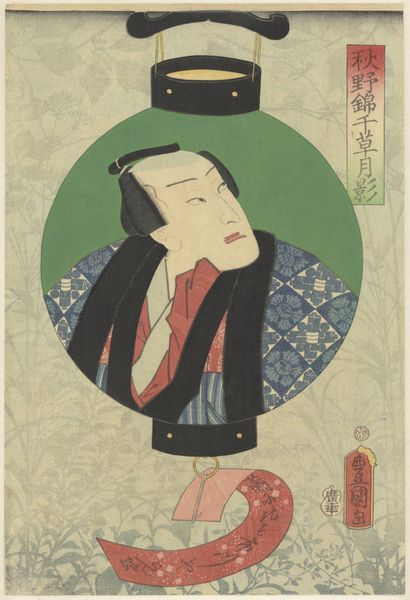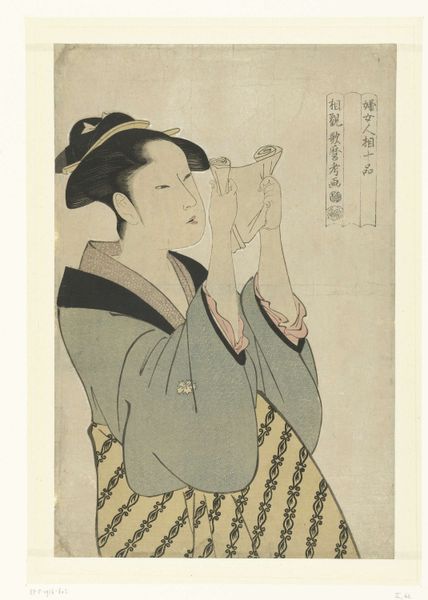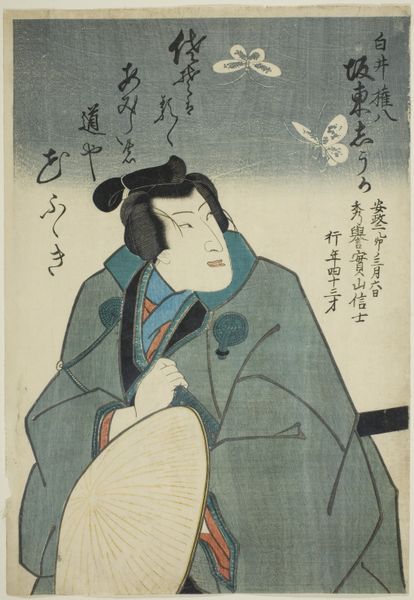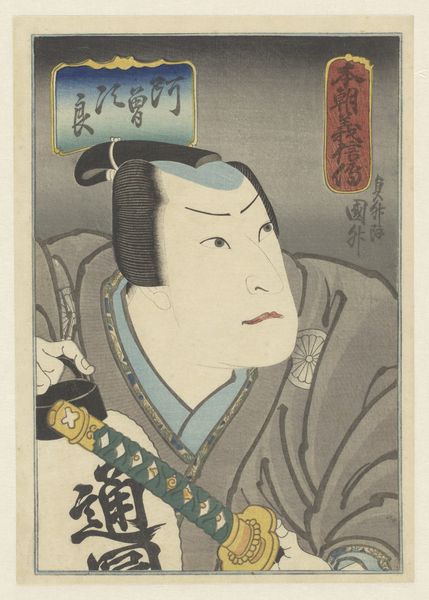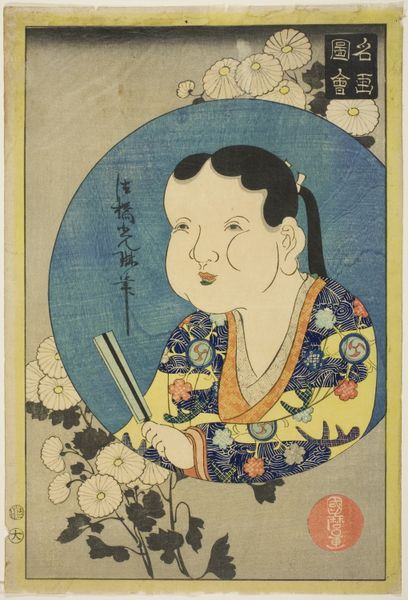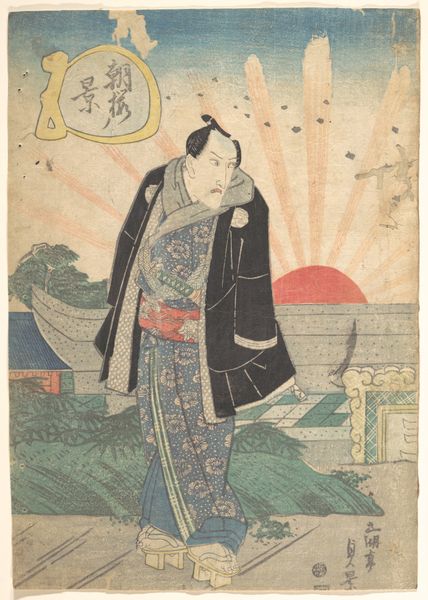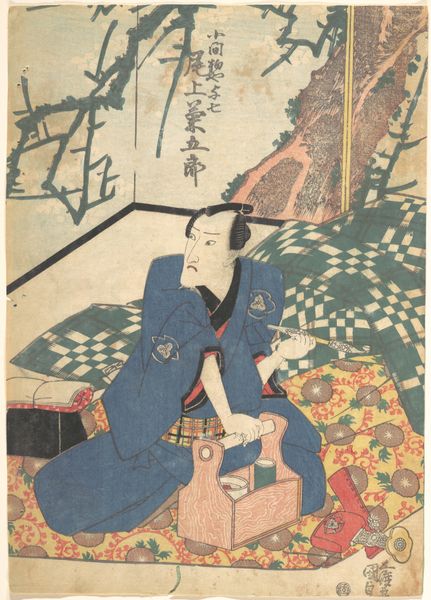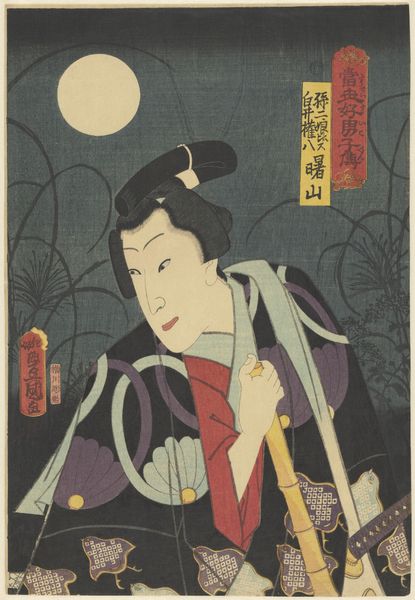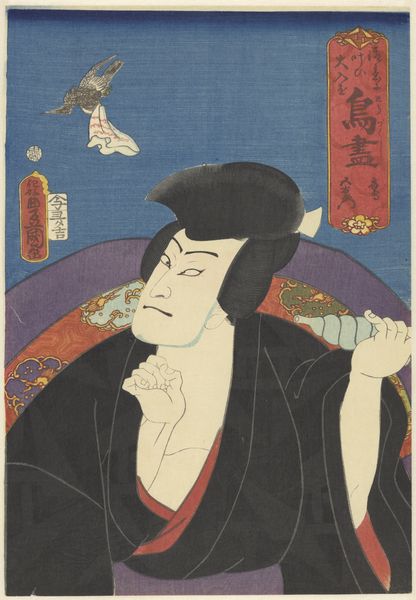
print, woodblock-print
#
portrait
# print
#
asian-art
#
landscape
#
ukiyo-e
#
woodblock-print
Dimensions: height 356 mm, width 249 mm
Copyright: Rijks Museum: Open Domain
Curator: Let’s discuss Utagawa Kunisada’s woodblock print from 1862, "Sumida River in Winter," currently held at the Rijksmuseum. What strikes you about this piece at first glance? Editor: The pervasive melancholic mood is the first thing. The almost suffocating navy backdrop creates a sense of confinement, focusing our attention sharply on the man’s face and attire and that stark winter scene floating above. Curator: Precisely. Kunisada, a leading designer of ukiyo-e woodblock prints, masterfully combines a portrait with a landscape in this work. Look closely at the materiality; each line, each color block represents a conscious decision in the printmaking process. The tools, the pigments available, even the paper all dictate the final outcome. Editor: It makes you wonder about the conditions of the artisans crafting each block. Was the labor equitable? Were these images accessible to those who actually lived along the Sumida River during winter? Who held the power in the production of these popular prints, and whose stories were excluded? The fan device feels very deliberate. Curator: A sharp comment! Consider also how this print blurs lines. We think of “high” art as original works. Here, mass-produced prints became valuable cultural commodities, shaping perceptions of place and personhood. What kind of relationship does the sitter, most probably a renowned Kabuki actor, have with that image on the fan? Editor: It almost operates as an advertisement, a branding exercise, carefully constructed to promote a certain persona in the cultural marketplace. Note also, it's no ordinary fan – its form echoing the round shape of mirrors. The winter landscape serves as a mirror of his own identity, or perhaps, his desire to project a specific one onto the public. Curator: Very insightful. It reflects, literally, the carefully crafted artifice, this whole structure of performance, consumption, and distribution that enabled its creation in the first place. Editor: Agreed. By understanding that intersectional complexity, we can gain a more nuanced appreciation. Curator: So, as you look at this artwork again, consider all that material and symbolic interplay. What kind of stories this image, made possible by many working hands, tell to those who engaged with it then, as now. Editor: This print, with its calculated somber mood and blend of social signals, opens up many pathways of cultural and political questions.
Comments
No comments
Be the first to comment and join the conversation on the ultimate creative platform.
